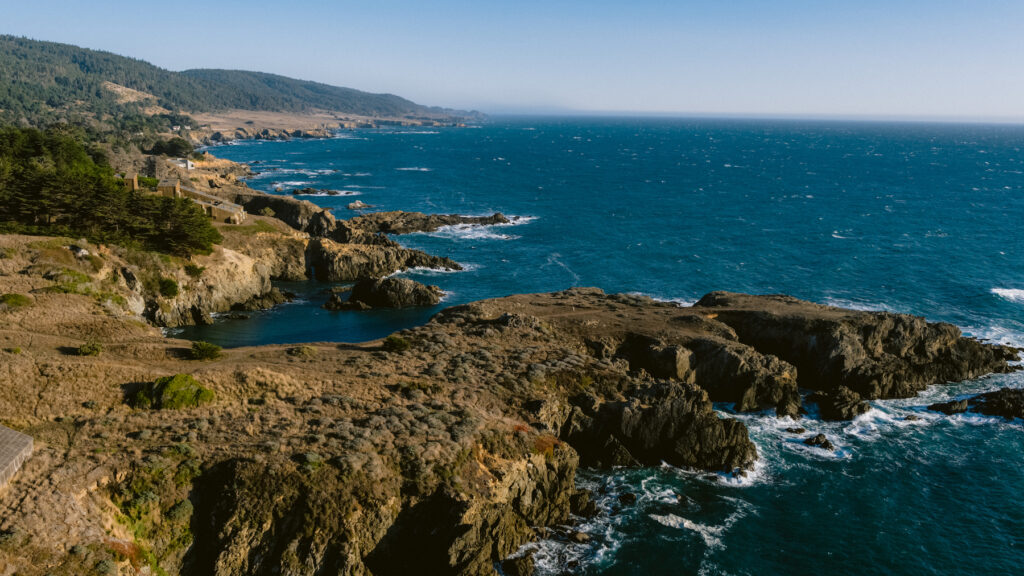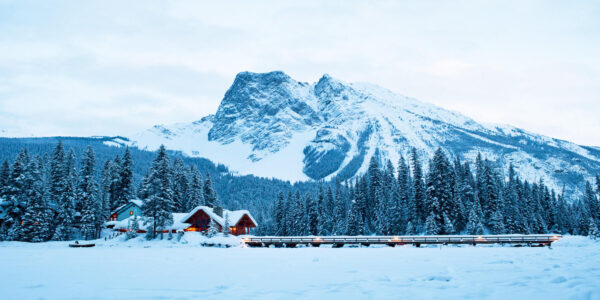
I Went Seaweed Foraging on the Sonoma Coast—Here’s What I Learned
A morning in the intertidal zones with Strong Arm Farm and Delphinium Wine Company tells a story of tide and terroir.

Krista Simmons
Daybreak sneaks through my curtains at Sea Ranch Lodge, and much as I wish I could cozy up all morning in the soft cotton sheets, it’s time to hit the tide pools. And time is of the essence. The full moon graced this stunning stretch of the Sonoma Coast with a negative spring tide, exposing the shallow growing species of seaweed, making them easier to harvest. Following the guidance of Heidi Herrmann, owner of Strong Arm Farm, we plan to spend the morning unearthing the edible gems residing in the intertidal zone before the water rises, once again shrouding them in mystery.

Photo courtesy of Sea Ranch Lodge
It’s nothing short of mesmerizing to learn just how much food lies below the surface of the sea. Herrmann has been foraging the waters north of Bodega Bay for 17 years, more recently teaching others not just how to collect but also how to care for the kelp. These large algae, she reminds us, are perennials—they come back every year, bigger and stronger, if we harvest mindfully.
With a playful patience, Herrmann shows us how to cut the blades of California kombu that stick out of the frigid intertidal pools like elbows above their stripe, ensuring they can regenerate. She kindly reminds us to never take more than what we need. (In California, you can harvest up to 10 pounds of kelp and other marine algae per day for recreational use, but that’s far more than one needs for home use.)

Thomas J. Story
Our group was made up of Sea Ranch guests and residents as well as Delphinium Wine Company founder Courtney Humiston, each eager to learn more about Herrmann’s product, which she now sells to high-end chefs and at farmers markets. Humiston draws on these rich natural experiences specific to Northern California to make her wine, whose label is named after an endangered species of larkspur flower native to Sonoma and Marin counties. The morning gathering was organized in collaboration with the two entrepreneurs and Sea Ranch Lodge, each inspired by the coastline in their respective endeavors.
The morning reveals the sheer wonder of the sea on the Sonoma Coast. As we wade through the shallow pools, we learn that there are nearly 700 varieties of seaweed in California according to the Native Plant Society. None of them are toxic to humans, but only six main sea greens are desirable culinarily. We gathered California kombu, wakame, nori, dulce, sister sarah, and feather boa kelp, whose air ballasts keep them upright in the water and make for delightful, snappy pickles. The most commonly known to the Western diner are the first three: Kombu is most commonly used in broths and dashi to add a depth of flavor and umami; wakame is commonly seen in banchan and Japanese side salads with sesame oil; and of course, nori is dried and used as a snack or to wrap sushi rolls.

Photo courtesy Delphinium Wine
It’s these vibrant flavors and wonders of the sea that Humiston channels to craft her California cremant, a beautiful sparkling wine that’s inspired by the Sonoma Coast. And it’s easy to see why. The region is absolutely breathtaking. With jagged coastline marked by blindingly blue water, secluded coves, and wildflower-strewn cliffs, it’s almost impossible not to feel a sense of grounding and wonder.

Thomas J. Story
Every plant had a purpose, a flavor, and a story, which Herrmann shared delightfully with those of us who braved the early wake-up call. Seaweed is truly a superfood: rich in iodine, omega-3s, fiber, and minerals. It sequesters carbon and is vital for marine environments. Not to mention, it’s totally delicious, even when eaten raw. (The kombu and nori, however, are really at their peak flavor once dried in the sunlight.) It’s these little lessons in ecology that keep Herrmann and her guests both curious and engaged in preserving California’s coastline.
After we finish harvesting, Herrmann welcomes us to offer thanks to the sea, a practice the Kashaya-Pomo band, the first people known to have lived in the area honor each time they visit. It’s that shared sense of gratitude for the abundance the ocean provides that keeps us hungry for more.
